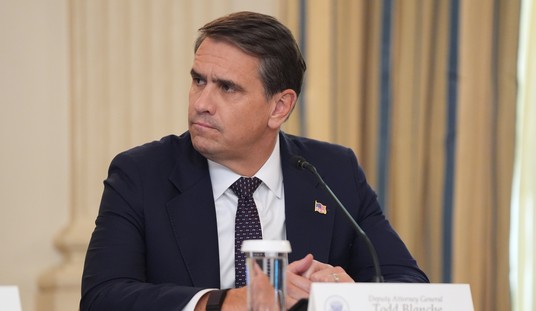Listening to UN and government representatives announce the Paris agreement to “save the planet” from man-made climate catastrophe, one can’t help wondering if the whole lot of them has been transported to Neverland.
Do recall that Peter Pan author J. M. Barrie explained that Neverlands are found in the minds of children.
There, with the help of fairy dust, Peter Pan can fly, and he teaches others to overcome their common sense and soar as well. Peter claims greatness, is able to feel danger when it is near, and even has the ability to imagine things into existence. In fact, there is almost nothing the hero of Neverland cannot do — yet in order to maintain such powers, Peter must stay childlike and forget everything he learns about what happens in the real world.
The script for much of this year’s UN COP21 climate conference, held in Paris during the first two weeks of December, could have come directly out of Barrie’s book. The UN believes they can sense climate danger decades in advance, a power that requires forgetting that every prior prediction they made turned out to be wrong. They imagine that today’s global climate models (GCM), simulations that utterly failed to forecast the current 18-year “pause” in global warming, provide lawmakers with the “unequivocal” knowledge they need to enact trillion-dollar policies to limit planetary temperature rise to two degrees Celsius.
To back up such extraordinary claims, they tell us that there is an “overwhelming consensus” of scientists who agree with their position. This statement requires that they imagine thousands of well-qualified skeptic scientists out of existence, or imagining that they constitute a tiny minority that isn’t worth their time.
At “A Day of Examining the Data,” the December 7 counter-conference to COP21, the Nongovernmental International Panel on Climate Change (NIPCC) released a report titled “Why Scientists Disagree About Global Warming.” The report was authored by climatologist Dr. Craig Idso of the Center for the Study of Carbon Dioxide and Global Change in Arizona, geologist Dr. Robert Carter, former Head of the Department of Earth Sciences at James Cook University in Australia, and physicist Dr. S. Fred Singer, Emeritus Professor of Environmental Sciences at the University of Virginia and NIPCC founder.
The report refutes most of the UN proclamations. For example, the NIPCC report states:
- “There is no survey or study showing “consensus” on the most important scientific issues in the climate change debate.”
- “Neither the rate nor the magnitude of the reported late twentieth century surface warming lay outside normal natural variability.”
- “No evidence exists that … [a future warming of 2°C] would be net harmful to the global environment or to human well-being.”
- “No close correlation exists between temperature variation over the past 150 years and human-related carbon dioxide (CO2) emissions.”
- “GCMs systematically over-estimate the sensitivity of climate to CO2.”
- “Significant correlations exist between climate … and solar activity over the past few hundred years … Forward projections of solar cyclicity imply the next few decades may be marked by global cooling rather than warming, despite continuing CO2 emissions.”
- “Melting of Arctic sea ice and polar icecaps is not occurring at ‘unnatural’ rates.”
- “Sea-level rise is not accelerating.”
- “No convincing relationship has been established between warming over the past 100 years and increases in extreme weather events.”
It is not just within the science where the UN and their supporters have imagined away reality. To accomplish their fantastic goals, they want to “decarbonize” the world’s energy supply — expensive solar and wind power would be in, inexpensive coal would be out. In fact, all hydrocarbon fuels — the current source of 86% of the world’s energy — will have to be replaced with renewable power by 2050 to meet the UN’s new goals, according to climate activists.
But were this ever to come about in the real world, billions more of the world’s poor would join the 1.2 billion people who currently lack access to electricity.
Millions more would be thrown out of work as companies went bankrupt due to soaring energy prices. Social unrest would naturally follow and once-prosperous societies that took generations to build would inevitably crumble.
Some fantasy.
Fortunately, the UN will never fully accomplish this nightmare scenario because all UN climate agreements, including the one approved in Paris, are founded on the UN Framework Convention on Climate Change (UNFCCC) agreed to at the Earth Summit in Rio de Janeiro in 1992. The Paris agreement makes specific reference to various articles in the UNFCCC, including Article 4, which states:
The extent to which developing country Parties will effectively implement their commitments under the Convention will depend on the effective implementation by developed country Parties of their commitments under the Convention related to financial resources and transfer of technology and will take fully into account that economic and social development and poverty eradication are the first and overriding priorities of the developing country Parties.
Translated, this means that developing countries will keep their emission reduction commitments only if taxpayers in the developed world pay them enough, and donate to them enough of our technology.
Also implied in Article 4, and therefore underlying the Paris Agreement: even if the developed gives these countries everything required by the agreement, developing countries may simply ignore their own emission targets, as they can be said to interfere with their “first and overriding priorities” of “economic and social development and poverty eradication.”
Developed nations like the U.S. and Canada do not have this option. These countries’ taxpayers must abide by the emission reduction commitments regardless of the economic impact.
Significantly reducing CO2 emissions would require dramatically cutting back on the use of coal, the source of 81% of China’s electricity and 71% of India’s electricity. As coal is — by far — the least expensive source of electric power in most of the world, reducing emissions by restricting coal use would unquestionably interfere with development priorities.
So developing countries simply won’t do it, and they will correctly cite the UNFCCC to support their decisions.
The Paris Agreement is effectively another Kyoto Protocol: the vast majority of the world’s emissions are exempt from binding control. The soaring energy prices, wide scale unemployment, and increasing social unrest will be limited to the developed world — and those reliant on the developed world for foreign aid.
The developed world must wake up to the climate hoax that threatens to ruin it. The NIPCC gives the following sensible policy advice:
- “Policymakers should seek out advice from independent, nongovernment organizations and scientists who are free of financial and political conflicts of interest.”
- “Individual nations should take charge of setting their own climate policies based upon the hazards that apply to their particular geography, geology, weather, and culture.”
- “Rather than invest scarce world resources in a quixotic campaign based on politicized and unreliable science, world leaders would do well to turn their attention to the real problems their people and their planet face.”
After drinking the poison Captain Hook had intended for Peter, Tinker Bell survived only because children across the world clapped loudly to show their belief in fairies. The UN believes their hopeless, naïve, and dangerous climate change plans can survive as long as the media and politicians keep clapping. It’s time they stopped and let the climate scare die.









Join the conversation as a VIP Member